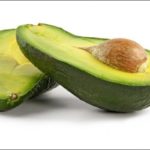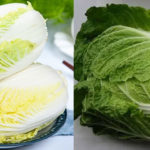Method 1: Preserving unripe avocado
1. If you want to speed up the ripening process, place the avocado in a brown paper bag as the bag will expedite ripening. Without the bag, the avocado will take 7 days to ripen. On the other hand, using the bag will reduce this time to 3-5 days.
To further accelerate the process, place an apple or a banana in the bag. In this case, the time can be reduced to 2-3 days. Brown paper bags are filled with ethylene gas, which helps accelerate ripening. Apples and bananas produce a lot of ethylene gas during the ripening process, so putting an avocado in the bag with these fruits will expedite the ripening process for all the fruits in the bag.
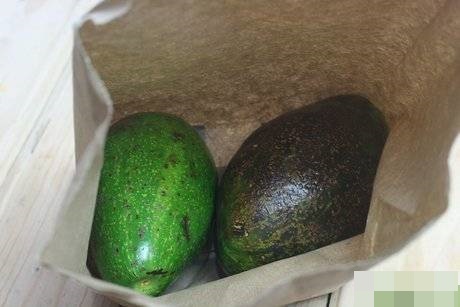
2. Store avocado at room temperature
Store avocado in a brown paper bag, placed on the counter or in a food storage cabinet away from direct sunlight. Do not refrigerate unripe avocados as the low temperature will significantly slow down the ripening process and therefore, your avocado may not ripen properly or as quickly as desired.
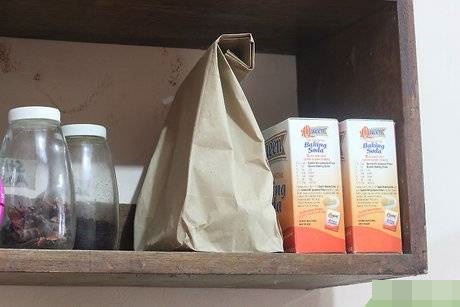
3. Check the avocado daily
Gently squeeze a ripe avocado to check its ripeness. A ripe avocado will yield slightly when pressed. If your avocado is stored correctly, it will last at room temperature for about a week. When checking, only press the avocado down slightly. If you see a bruise or a dent that does not spring back when you press your finger into it, the avocado may be overripe.
Method 2: Preserving ripe, uncut avocado
1. Use a pastry brush to spread lime juice evenly on the avocado
Cutting an avocado breaks up the cells, activating the oxidation process. The oxidation process causes the fruit to turn brown. Acidic substances slow down the oxidation process. Besides lime and lime juice, other acidic substances including orange juice, vinegar, and tomato juice also serve to prevent the avocado from browning.
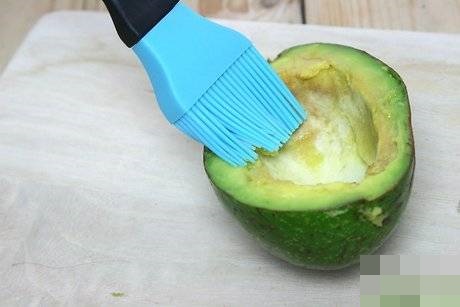
2. Reassemble the avocado halves
Put the halves back together as best as you can, matching the half without the pit to the pitted half. This is done to minimize exposure to air as much as possible. If the avocado halves are still intact, you can reassemble them together to cover the entire exposed flesh effectively. You cannot repair damaged cell membranes, so the oxidation process will still occur, but this step can help slow down the oxidation process by reducing the amount of oxygen in contact with the avocado’s cells.
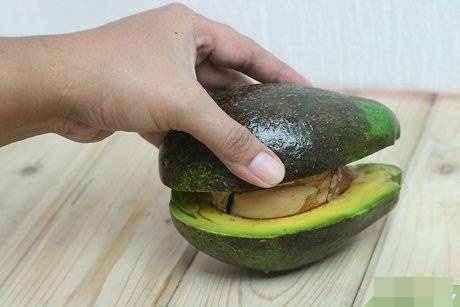
3. Wrap the avocado tightly in plastic wrap to create an airtight environment
Alternatively, place the avocado in a sealed container, such as a vacuum-sealed bag or a resealable plastic bag. The true purpose of this is to limit or block the air flow on the surface of the fruit. By creating an airtight environment, the amount of oxygen in contact with the avocado’s flesh is restricted, slowing down the oxidation process.
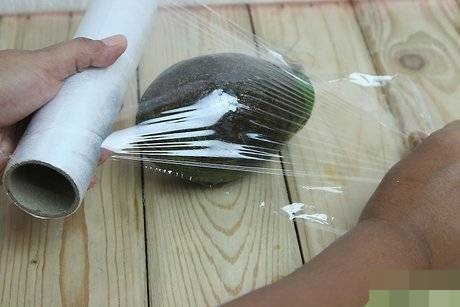
4. Refrigerate
Wrap the avocado and place it in the refrigerator for a few days until ripe. Store the avocado on a fruit shelf or at the back of the refrigerator, where it is coldest. Do not store the avocado at room temperature. After the fruit is cut, it must be refrigerated to maintain quality and flavor.
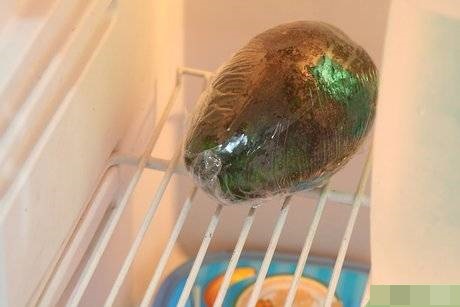
5. Observe changes
Since the avocado has been refrigerated, it will take longer to ripen compared to leaving the whole fruit at room temperature. Cut avocados are even more difficult to preserve. Depending on the stage of ripeness, the avocado can ripen in a few days to a week. Sometimes, the fresh pulp may begin to oxidize before the fruit is completely ripe. A ripe avocado will slightly change after you lightly press on it with your finger. And a soft avocado is overripe.
Method 3: Preserving ripe, uncut avocado
1. Place the avocado in a plastic bag
Because the avocado has not been cut and the cell membranes have not been damaged, it does not need to be placed in a plastic bag or storage container. Sealing and storing may extend the shelf life for another day, but this is debatable.
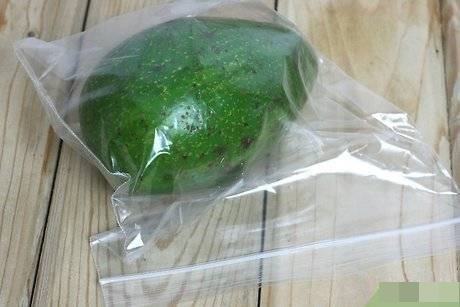
2. Refrigerate
Store the avocado on a fruit shelf or at the back of the refrigerator. Do not refrigerate ripe avocados even if they are uncut. The low temperature in the refrigerator can significantly slow down the ripening process. Therefore, storing avocados in the refrigerator may delay the ripening time and spoil them compared to storing them at room temperature.
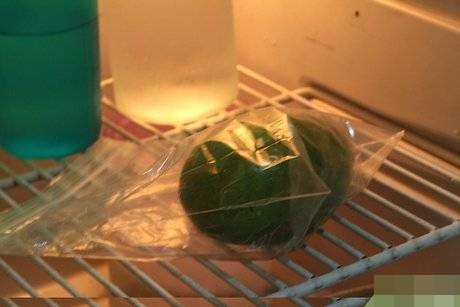
3. Check the avocado regularly
When stored this way, avocados will last for about 3-5 days. If the avocado becomes slightly mushy or if you press it and it leaves bruises and permanent dents, then the avocado may be too ripe and may not be as tasty.
Method 4: Preserving cut, ripe avocado
1. Leave the core in the avocado as removing it will slow down the oxidation process
Leaving the core in the avocado helps minimize cell damage. Additionally, the pit prevents the flesh from coming into contact with light and air, reducing the amount of oxygen the flesh is exposed to and therefore slowing down the oxidation process.
2. Wrap the avocado in plastic wrap
Wrap the avocado tightly in plastic wrap to create an airtight environment. If you don’t have plastic wrap, there are other options. You can store the avocado in a sealed container, such as a vacuum-sealed bag or a resealable plastic bag. What you’re truly trying to do is limit or block the air flow on the surface of the fruit. By creating an airtight environment, the amount of oxygen in contact with the avocado’s flesh is restricted, slowing down the oxidation process.
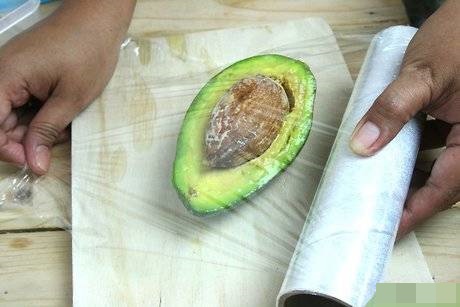
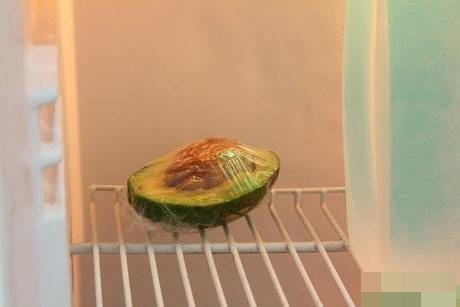
3. Refrigerate
Store the wrapped avocado on a fruit shelf or at the back of the refrigerator. Do not store ripe avocados at room temperature, especially if they have been cut. The low temperature in the refrigerator slows down the ripening process, helping the avocado stay fresh longer.
4. Check the avocado regularly
A ripe, cut avocado stored using this preservation method will stay good for 1-2 days before becoming overripe. If the avocado becomes slightly mushy or if you press it and it leaves bruises and permanent dents, then the avocado may be too ripe and may not taste as good.
Method 5: Freezing avocado
1. Cut the avocado
Cut the avocado in half using a sharp kitchen knife. Place it on a clean, safe surface and use a sharp knife to cut. Twist the halves apart to separate them.
2. Remove the pit. Scoop out the avocado flesh with a large spoon
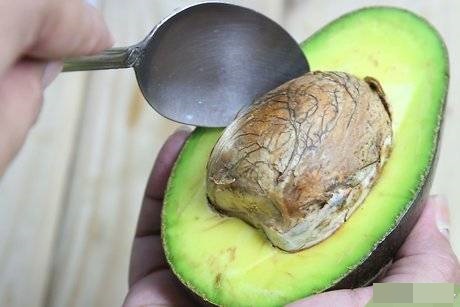
3. Mash the avocado
Put the avocado flesh into a food processor or a blender and run until well blended. The avocado needs to be mashed if you want good freezing results. Whole, sliced, cubed, or even crushed avocados will lose their form, texture, taste, and overall quality when frozen.
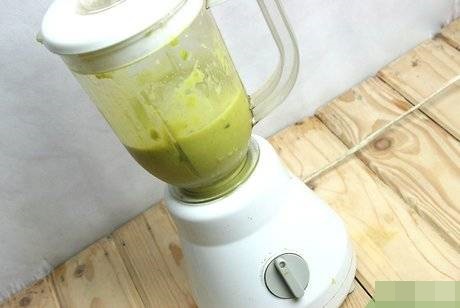
4. Add 1/2-1 tablespoon of lime juice and blend in the blender until well mixed. The acidic liquid slows down the oxidation process and maintains the overall quality of the avocado, allowing for longer preservation.
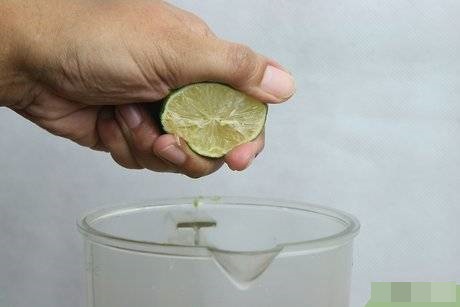
5. Put the mashed avocado into a container
Leave about 1.25-2.5 cm of space at the top of the container for the avocado to expand while freezing. Write the date of freezing and the quantity of avocado on the outside of the container.
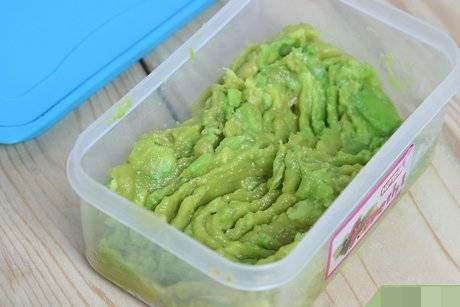
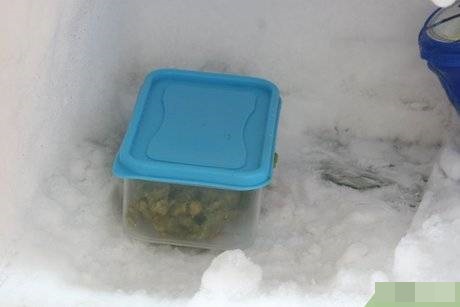
Freezing avocados using this method will preserve them for 3-6 months. When an avocado turns brown or discolored, chances are it has started to spoil.
Source: An Nhiên – Vietnamnet



























